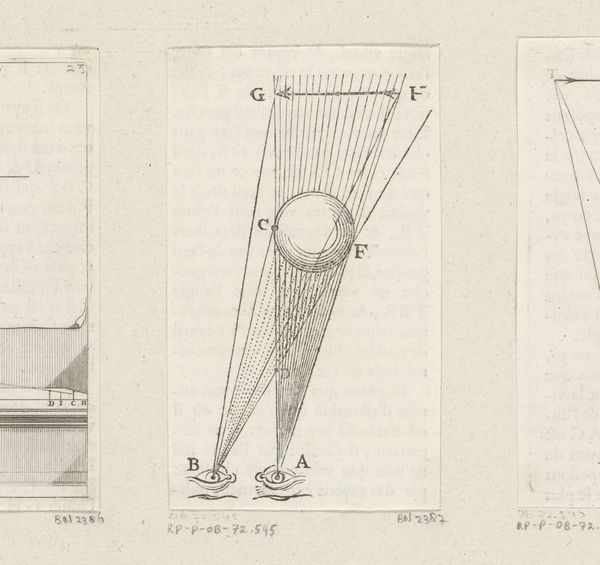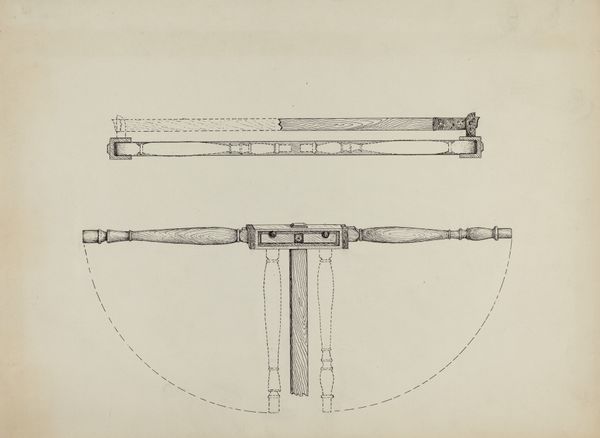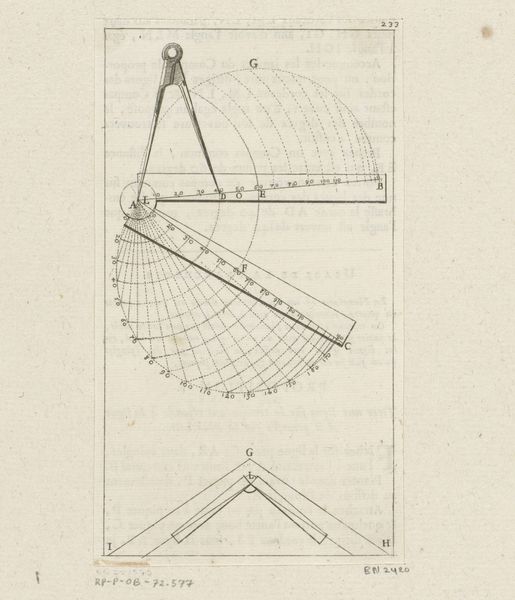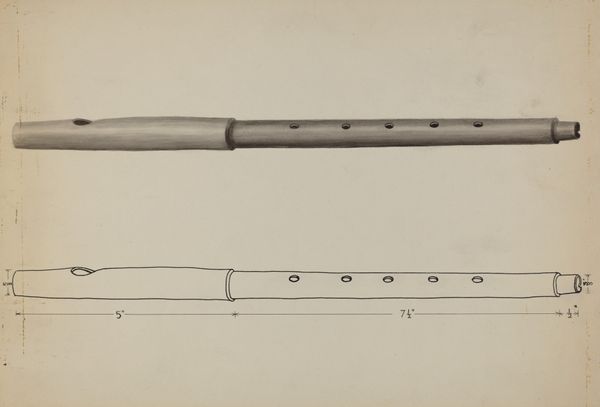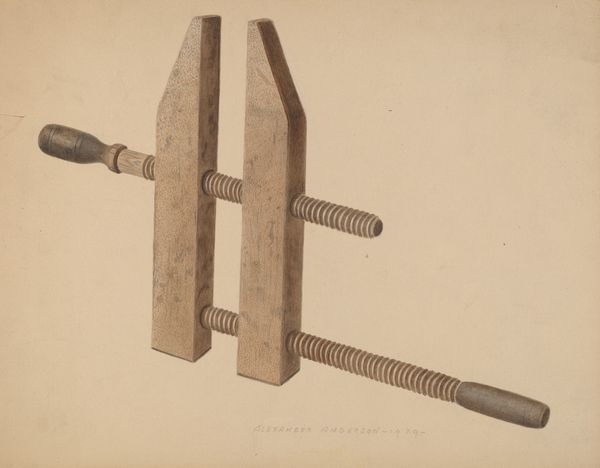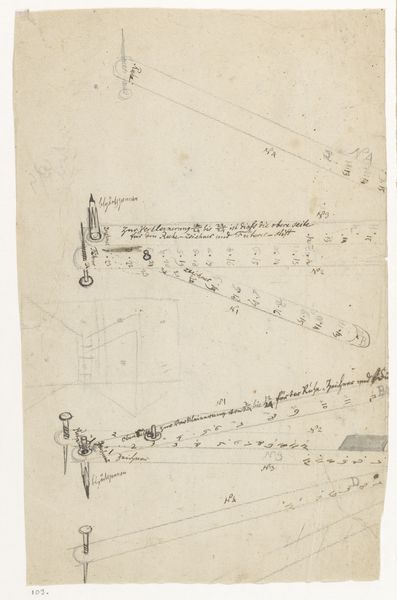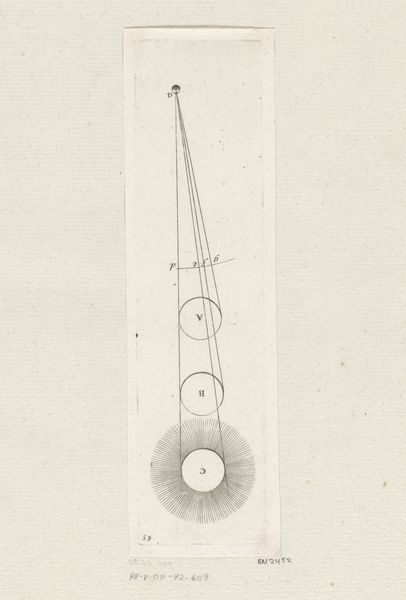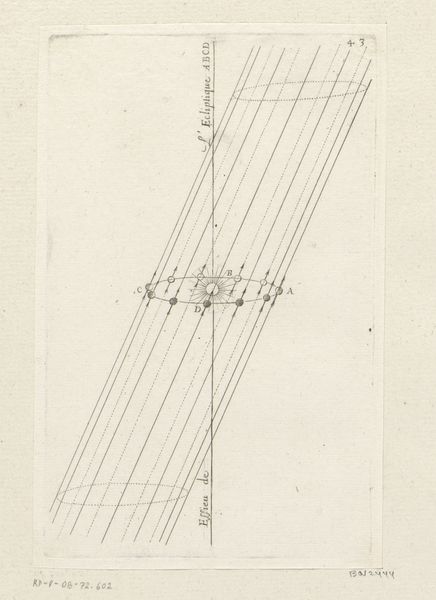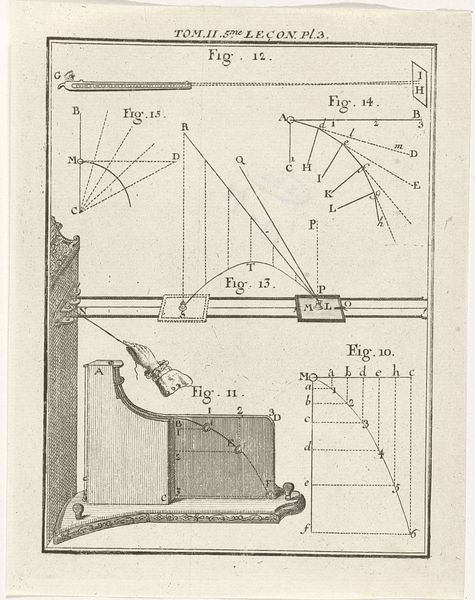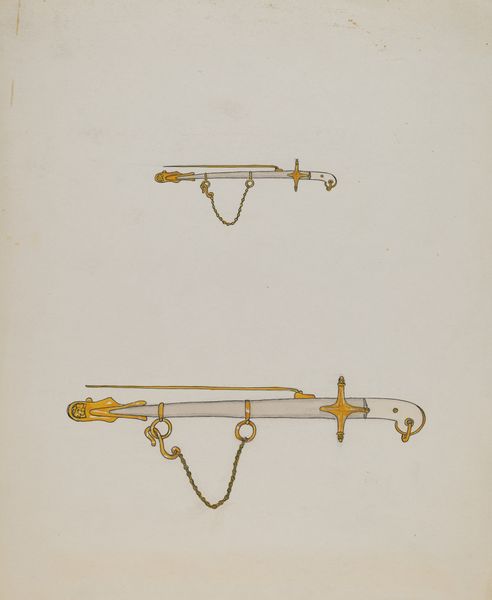
drawing, paper, pencil
#
drawing
#
aged paper
#
toned paper
#
light pencil work
#
neoclassicism
#
old engraving style
#
hand drawn type
#
paper
#
personal sketchbook
#
ink drawing experimentation
#
geometric
#
pencil
#
ink colored
#
sketchbook drawing
#
sketchbook art
Dimensions: height 330 mm, width 415 mm
Copyright: Rijks Museum: Open Domain
Curator: My first impression is of precision and clarity; the delicate lines create a beautiful sense of order on this aged paper. Editor: The sketch is surprisingly unsettling given that it renders the aesthetics of early industrial control. There's something eerie about these precise measuring instruments and the ways in which people began measuring and dividing space. Curator: That's fascinating. We are looking at "Pantograaf," a pencil and ink drawing on paper by Jan Brandes, likely created between 1787 and 1808. It’s part of what appears to be a personal sketchbook, focusing on geometric forms. Note the hand-drawn typography accompanying the illustration, it all adds to the charm of a bygone era. Editor: The term "pantograph" refers to an instrument used for copying drawings or maps at different scales. Given the context, it’s hard not to consider the role these tools played in colonization and map-making during that era. I'm particularly interested in how scientific precision facilitated control over distant lands and populations. Curator: A chillingly elegant manifestation of expanding authority. It's evocative how such seemingly neutral tools bear a cultural weight. Notice the circular motifs: wheels, measurement points… even the pin holes create a delicate dotted landscape. This recalls the symbolic weight attributed to circles – perfection, completion, and the eternal. Editor: Circles are definitely there, and maybe the implied geometry reveals an inherent drive toward totalization that’s echoed in historical accounts of power consolidating. Those seemingly innocent curves point to something insidious underneath! It's not only a sketch of an instrument, but a record of epistemology at play. Curator: Yes! But also a symbol of human ingenuity—the urge to map and understand our world. While we might read it through a critical lens today, we can also appreciate the historical context and artistic technique evident in this beautiful example of neoclassicism. Editor: Absolutely, Brandes’ drawing embodies that complex interplay. It's in this very duality that its continued relevance exists. A testament to knowledge production and simultaneously, its embedded implications of power. Curator: A potent convergence indeed! Brandes, with his meticulous rendering, hands us a diagram not just of measurement but, ultimately, one about cultural memory itself. Editor: Exactly. As we trace the artist's lines, let us then not forget to redraw history.
Comments
No comments
Be the first to comment and join the conversation on the ultimate creative platform.
